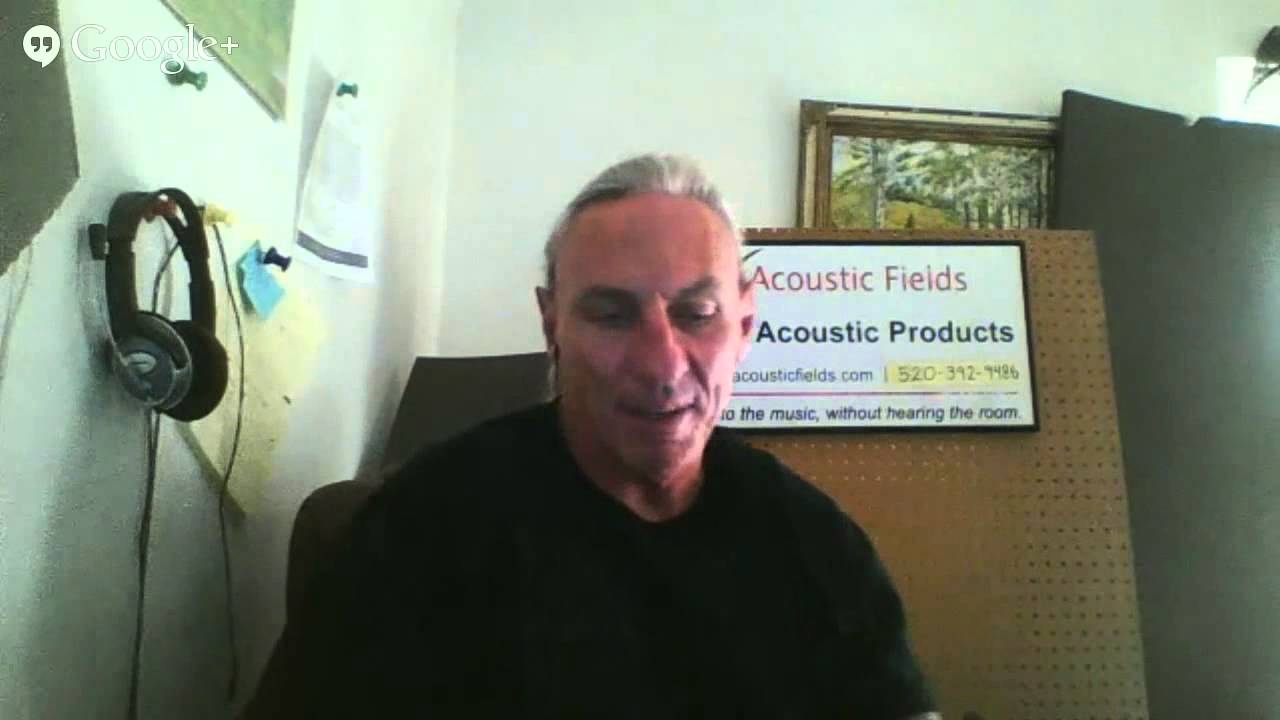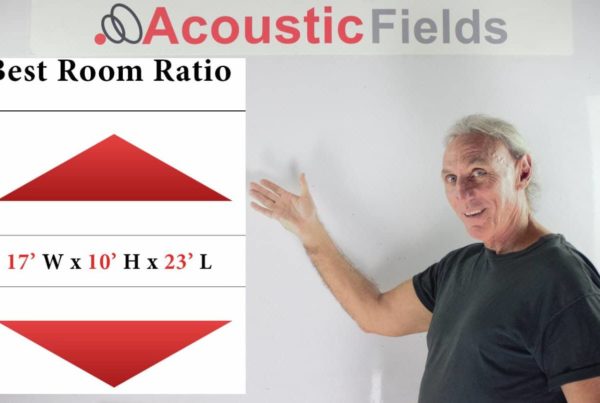As you will see in the following video, I was last week asked about a particular readers 2 channel setup and the problems he was facing. The following is a transcript of my response to accompany the video. So what could this YouTube follower do to overcome his problem?
Dennis: Get a new room. No, I say that in jest but there’s certain givens that we have to abide by when we’re dealing with two-channel sound. One of those givens is the sidewalls. The sidewalls have to be equal distance to a speaker and they also have to be of the same composition and consistency. Now, what does that mean? No cubby holes. No equipment racks. Nothing that can create more issues than we’re trying to resolve. Our goal is to get things symmetrical so that we can manage properly.
We have to manage reflections
We have to slow them down so that they mix with the direct sound from the speakers in just the right time signature that we want for our room usage. We can’t be having holes and gaps and unequal distances and things like that because it just makes our job so much more difficult and then there are points that you reach where the obstacles are just too great and the sonic sacrifices, if you will, are just too large.
You know our goal is good sound and good sound is a combination of doing a lot of things correctly in the right order and the compromises are too great with those alcoves and windows and unequal distances on both sides. I had a client the other day who wants to have a 5-foot equipment rack on his left sidewall right where the primary, secondary and tertiary reflections are, which are critical. We can’t have that, its sacred ground, that area, we can’t have any obstacles in the way. So he’s going to have this big, tall equipment rack there on the left side.
What’s that going to do? It’s going to destroy the time signature of the left-channel speaker, of the reflections off the wall from the left channel speaker. The right-channel is going to be fine because there’s no equipment rack. So the left channels going to be completely off. The equipment rack is going to cause so much more reflection issues than the sidewall itself. We’ll have the reflections on the sidewall and the reflections from the equipment rack to deal with, too much, too big of a sacrifice on sound quality.
Windows and the sound killer that is glass!
So in windows we all know my position on windows. You know it’s a horrible sound, it has an impact on the frequency response in the middle and high areas so you just can’t have them. If you’re real serious about good quality sound, you’ve got to cover those windows and you’ve got to do them in the right way.
Ali: With that said, we’ve seen this a lot with cubby holes it seems to be something that crops up quite regularly, so what can people practically do? I think a lot of people come to the conclusion, that maybe they can build some sort of reflection device that they can roll into that space to fill it.
Dennis: Well they can fill the space up but filling the space up is only part of the issue. Then they have to fill it in and cover the front so that it’s consistent with the rest of the wall surface. Filling up is good but if you fill it up with sound absorbing material and the rest of the wall is not then you have this area of high sound absorbing product on one side and not the other. So it skews the way you treat the room, you know you have more on one side than you do the other.
Two-channel is all about symmetry and balance.
We’ve got to have everything equal on both sides. And another thing with alcoves, cavities and fireplaces and things like that is that they produce sound, they’re a speaker. You can measure the amplitude, the strength of the sound they produce, you can measure the frequency. Well that’s the last thing we want in our room. We have two speakers, that’s the only thing we want making sound. We don’t want anything else in the room, whether it’s passive or active, whether you plug it in or you don’t, we don’t want anything else making sound.
So, we just have to have certain givens if we’re going to get quality sound and if you have a two-channel room with lots of gear, keep the gear low, don’t rise it up where the middle and high frequency tweeters and drivers are impacted by its space because that reflection pattern created by the middle and high frequency speakers is, it’s kind of sacred. That’s where you get your imaging, your focus, your definition, your sound stage, your width, height. Really important things to sound quality, I mean that’s what we go after with two-channel.
Our goal is to make the speakers disappear and just fill the room with music. So you’ve got to be really careful with these things and you know some of the rooms I see, just, I hate to tell people but you’re really better off with another room and if that’s not an option you probably can’t treat the problem areas in this room enough to get the quality level of sound that you need.
Expensive gear but in a bad room
Then I see really expensive gear, I see a hundred, hundred-fifty thousand dollars’ worth of gear in a room with an equipment rack on one side, left channel and a window on the other side. It’s almost like you spend all that money on gear but you can’t hear the quality of sound that it can produce. So there’s a balance, there’s a matching, there’s a compatibility between gear and room treatment There’s a compatibility between room treatment and room volume. There’s all these variables that you have to consider and I look at some of these rooms and pictures that people send in to me and I say “Oh my gosh, how can you hear anything that that system is capable of producing because it’s just so upside-down in all the variables that you need to manage correctly”.
Just always think ‘Two channel, balance, mirror image, left channel same as the right channel’ If you held a mirror up to the left channel that’s what you want the right channel to be.
In Summary
I hope this discussion helped. So I hope that helps you. If you have any questions at any time I am always on hand to help answer them. Leave them in the comments section or email me at info@acousticfields.com. If you would like to learn more about room acoustics please sign up for my free videos and ebook by joining the mailing list here. I send room tuning tips and things for you to test in your room every Wednesday. They are easy to follow and really help you enjoy more of your music. And if you would like your room acoustic issues analysed for free by me then please fill in the form here and I will be happy to take a look for you.
Thanks and speak soon
Dennis








The discussion on ductwork noise transmission from Acoustic Fields highlights crucial aspects of HVAC system acoustics. The movement of air…
Great build plans. thank you Denis
You must use absorption. Never place a chair against a wall.
A friend and I built several diffusors using these plans and they turned out absolutely beautiful. Very good instructions and…